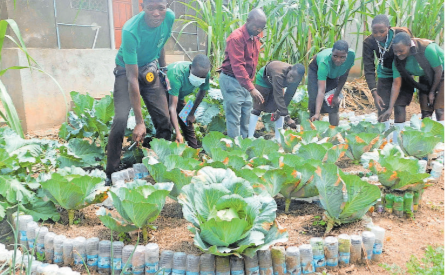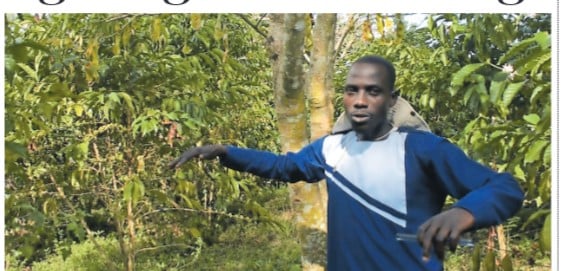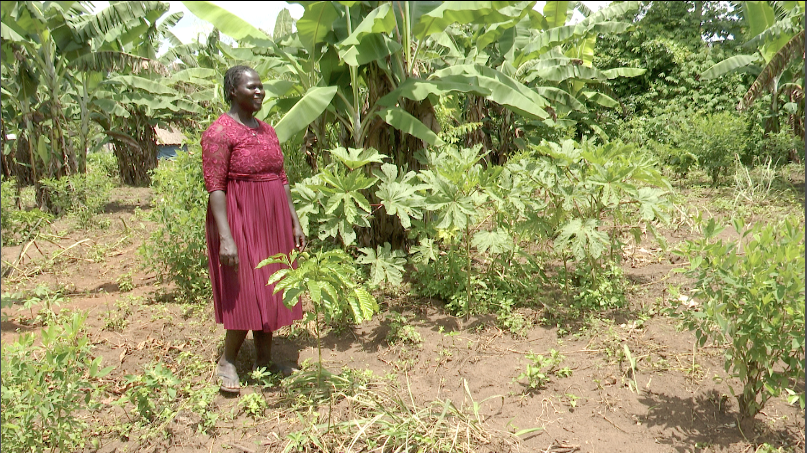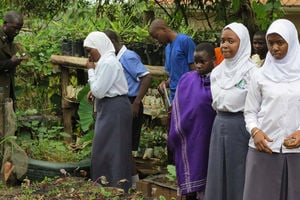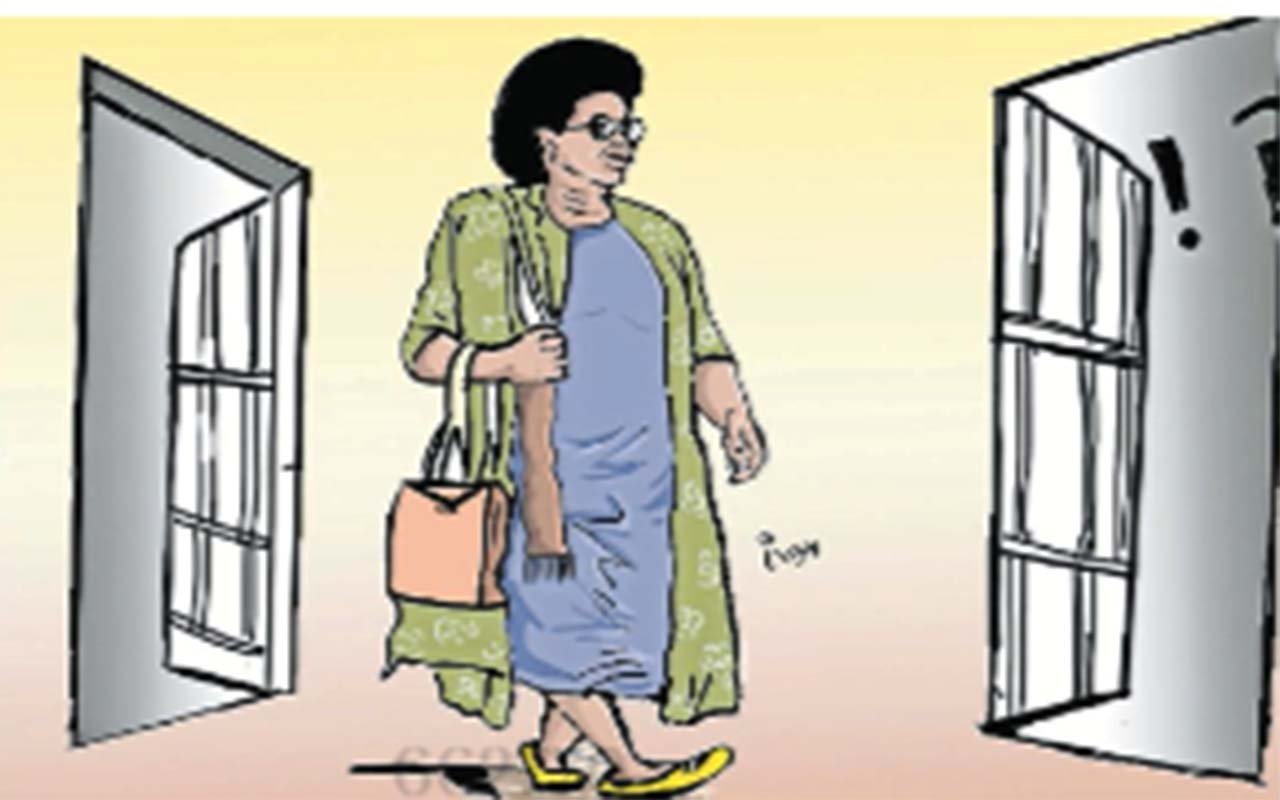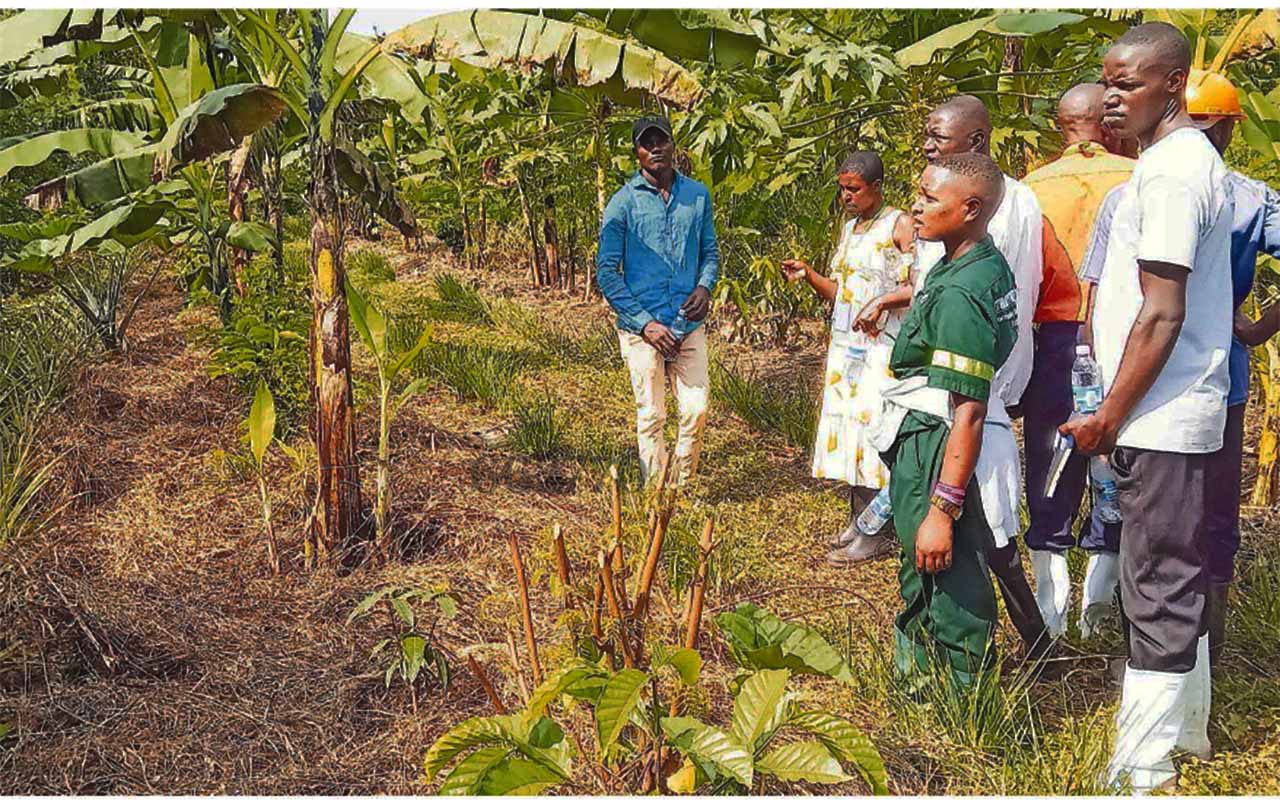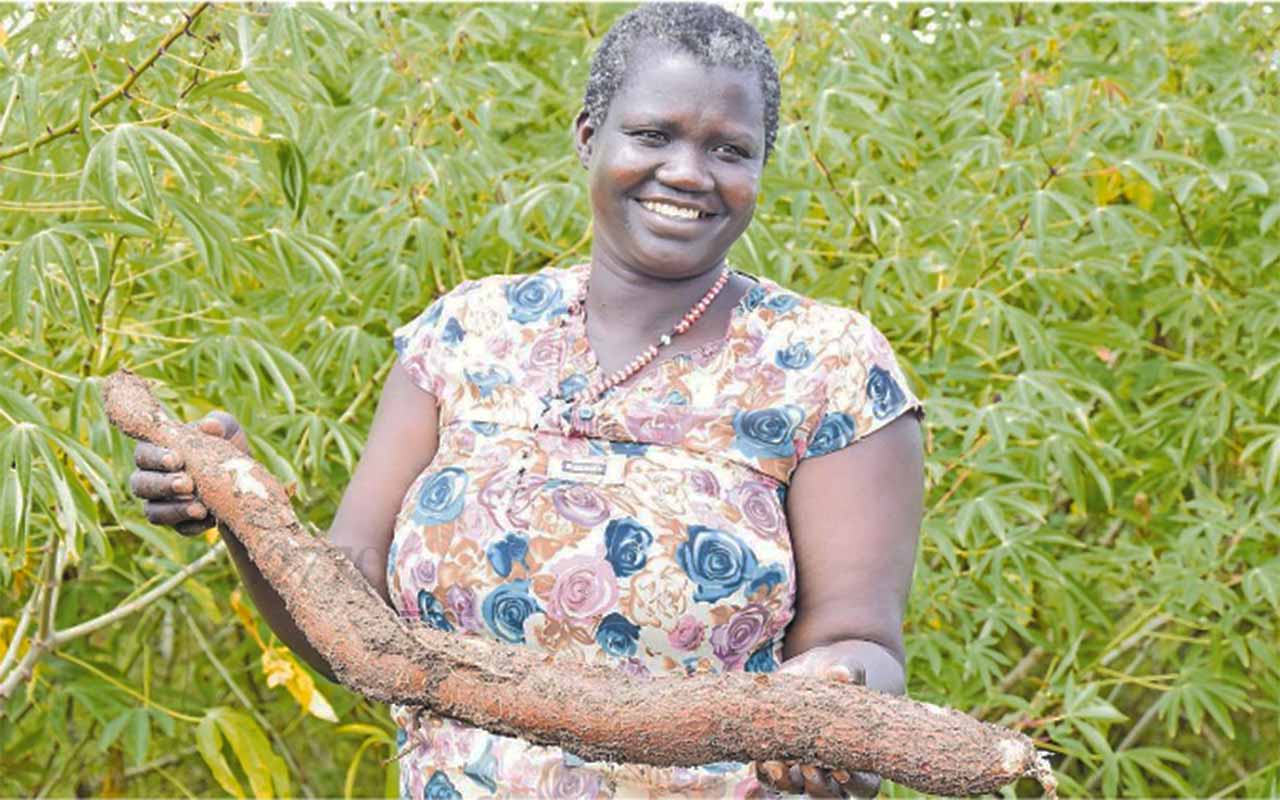
A farmer displays her cassava tuber after harvesting this season. PHTOT/TREVOR LUTALO
With funding from the embassy of Norway in Uganda and the Global Environmental Facility (GEF), FAO has been implementing projects to build climate resilience and enhance food and nutrition security among smallholder farmers and agro-pastoralists in Teso and Uganda’s cattle corridor.
The impact of climate change varies across different regions, often manifesting in distinct ways. In the Teso region of eastern Uganda, the community is grappling with prolonged periods of drought, unpredictable weather patterns, and soaring temperatures.
These adverse conditions have significantly disrupted the lives of residents, particularly those who depend on agriculture and livestock rearing for their livelihoods.
In a bid to take action and offset the dire impacts of climate change in the Teso region, the Food and Agricultural Organisation (FAO) is working to equip farmers and communities with tools to fight back.
With funding from the embassy of Norway in Uganda and the Global Environmental Facility (GEF), FAO has been implementing projects to build climate resilience and enhance food and nutrition security among smallholder farmers and agro-pastoralists in Teso and Uganda’s cattle corridor.
Under this project, FAO constructed community-based local chicken breeding centres and irrigation facilities, as well as seed multiplication and preservation centres, in Amolator, Katakwi, and Kaberamaido districts. These initiatives are designed to enhance agricultural productivity, improve food security, and build resilience in the region.
Water facilities
The water facilities in the area include a solar-powered irrigation system in Aleble, Amolatar District. It has a hydrant system that covers over 20 acres and can expand, with the ability to pump 10,000 litres of water per hour. There's also the Magoro irrigation system in Katakwi District, which currently covers 30 acres but has the potential to be expanded using mobile hose pipes.
In Toroma, Katakwi District, the Toroma valley tank was reconstructed by FAO. This tank can serve at least 1,500 cattle and about 1,000 small ruminants during dry spells.
“The farmers around were very active producing very many types of cereals and a few vegetable crops but on a very small scale. But given the kind of work they were doing we thought that they could be supported and start producing commercially, especially with crops,” FAO’s national consultant in charge of agricultural water production, Mr Dennis Besigye says.
According to FAO country representative, Dr Antonio Querido, the water systems are intended to permit farmers to endure drought spells and extend their farming seasons.
“This irrigation system provides an opportunity for farmers to have water at the field level allowing them to take the benefit of the fertile soils and be able to do more than two or three seasons in a year. So these irrigation systems create an opportunity for farmers to expand their production system for them to explore other crops and to ensure that they have production. It uses solar power to pump water from the ground source and deliver to farmers at the field level. The hydrants allow us to distribute water at lower costs and we believe this system can be scaled to other districts and also to other parts of Uganda,” Dr Querido explains.
Betty Agweng, one of the beneficiaries in Amolatar believes the irrigation system will greatly improve their production and nutrition by permitting them to continue farming all year round without breaks.
Hatcheries
Two community hatcheries have been established; one in Omodoi Cell, Ochero Town Council, Kaberamaido district, and the other in Katakwi Town Council, Katakwi District. These facilities will accelerate the multiplication of improved genetics in the region.
According to Dr Querido the initiative aims to support communities in improving their local chicken genetics and creating a sustainable production system. The hatcheries have a combined capacity to produce 1880 chicks per week.
“With this, we believe that we will create a capacity to improve the genetics of our local birds because they are resistant to diseases. This gives farmers an opportunity to grow their stock.”
Dr Brian Babigumira from National Agricultural Organisation (Naro) notes that the improved indigenous chickens provided to farmers are resilient to diseases and can thrive in harsh conditions.
“The genetics that we are bringing here have been developed using local chicken from Uganda, so there is no way that this chicken will affect the genetics that are in this area. Indigenous chickens have evolved with the environment for many years which has allowed them to develop adaptive traits – they can survive at high levels of disease challenges, so they have a higher survival rate,” he explains.

Farmers showcasing the different activities that they are engaged in and what they have learnt from Farmers Field Schools (FFSs). FFSs are helping in mobilising farmers to learn better agricultural practices to boost production as well as enable them adapt to challenges like climate change. PHOTOS BY BRIAN MUTEBI
Hybrid
Cassava is a crucial staple food in the Teso region, but the soil conditions are not ideal for most crops. It is important to develop better cassava varieties that can withstand tough environmental conditions and produce high yields. This is a top priority for the region's agricultural sector.
